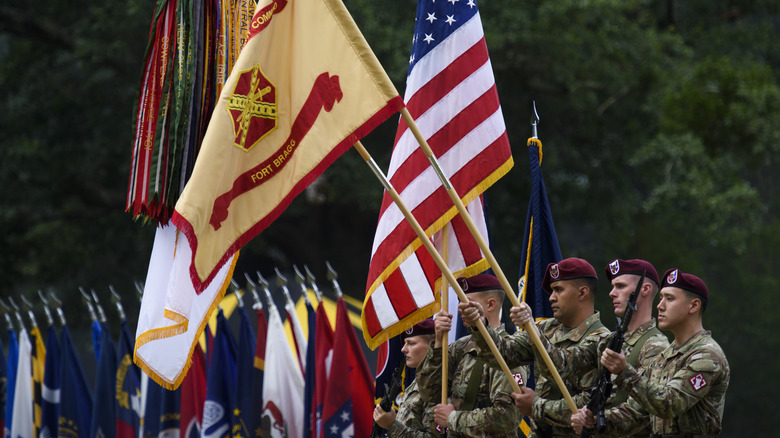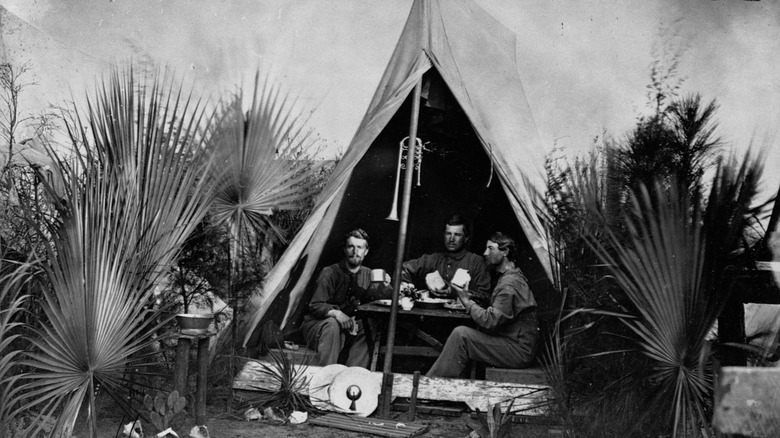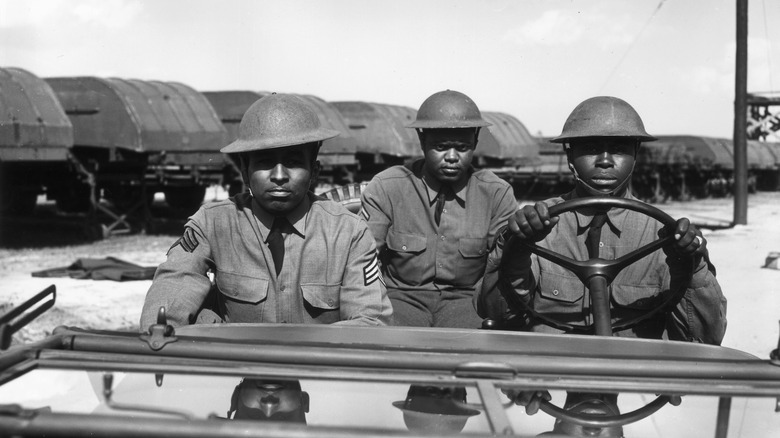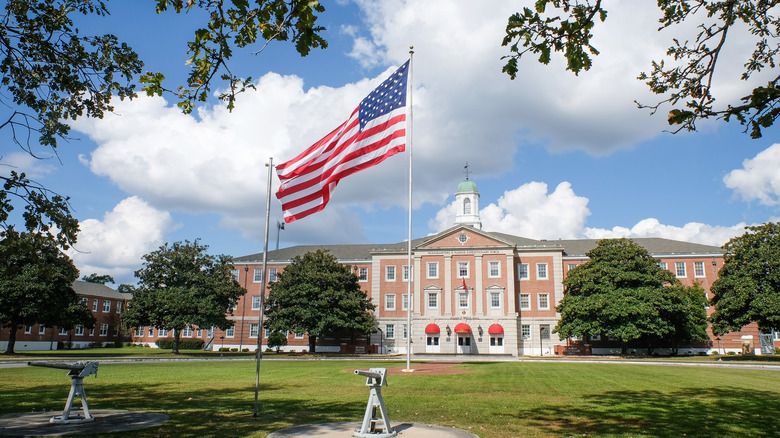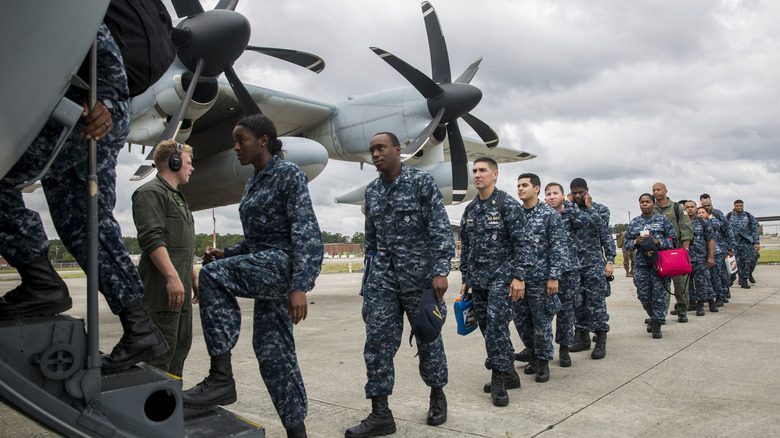The Reason Why North Carolina Has So Many Military Bases
It is well known that the U.S. has the most advanced military in the world. It has some of the fastest naval ships and military helicopters along with well-trained and well-equipped troops, not to mention a 2025 budget of $1.39 trillion. The country has 750 to 800 military bases worldwide for training and housing its troops, including many in North Carolina. While some know the state for its scenic views and historical heritage, others recognize it for its importance to U.S. military history and strategy. Among North Carolina's military installations are the Marine Corps facilities Air Station Cherry Point and Camp Lejeune, Pope Army Airfield, Fort Liberty, and Seymour Johnson Air Force base.
The primary reason North Carolina has so many military bases is that it offers one of the most favorable climates in North America, providing more training days for the country's troops year round. Furthermore, its location on the Atlantic Ocean benefits bases like Camp Lejuene that focus on training troops in water-based warfare. Let's briefly explore some of the state's most important military bases to better understand why it has one of the largest military presences in the U.S. today.
Some NC military outposts date back to the Civil War
North Carolina has historically been a military hub, contributing to the development of U.S. offensive and defensive forces since the American Revolution. As the country grew throughout the 19th and 20th centuries, the state continued to support the country's military. It has provided numerous tracts of land for military bases, with different bases adapting to the varied terrain in the state.
In the 19th century, dozens of military camps sprouted up throughout North Carolina, most serving as installations for Confederate forces. Many of these camps operated throughout the Civil War, including Canal, Beauregard, Cobb, Daniel, Floyd, Hill, and Lamb. Some provided housing and training facilities for troops, while others served as temporary strongholds meant to protect particular areas of interest. Camp Beauregard, established in 1861 in Ridgeway, Warren County, stands as the first Confederate cavalry training ground in the state. These camps showcased North Carolina's strengths as a premier location for military bases, and over time, more permanent installations were established in some places. Among these is Fort Liberty, which is currently one of the largest and most prominent military bases in the country.
Fort Bragg is more than 100 years old
Fort Liberty was established in 1918. The camp covers 172,000 acres, with over 50,000 troops served by 1,400 miles of roads and 23 miles of railroad tracks. In its early years, the fort was known as Camp Bragg, and was named after Confederate General Braxton Bragg. It was even briefly abandoned after World War I before being converted into a permanent army installation a couple of weeks later. In 1922, the base's name was changed from Camp Bragg to Fort Bragg, and by the summer of 1941 it had the largest army population in all of America with an astonishing 67,000 soldiers.
Fort Bragg encompasses a wide variety of physical features and biomes. The base includes lakes, swamps, streams, and forests, all of which have proven useful in training U.S. troops over the years. From the 82nd Airborne, U.S. Army Reserve Command (USARC) and 4th Medical Command to the US Army Special Operations Command and 18th Aviation Brigade, the fort has consistently supported various military units. Today, it still holds the title of the largest military base by population in America, with an estimated 260,000 military and civilian personnel residing within its confines. The installation features several ranges, impact areas, and drop zones, all designed to sharpen the skills of every service member on the base.
The Marines train at Camp Lejeune
Camp Lejeune, an ideal site for military training in amphibious assaults, was established in 1941. With World War II looming, the U.S. military needed to be prepared for the certainty of being drawn into the encroaching chaos. The original camp, located in eastern North Carolina in the New River area of Onslow County, covered tens of thousands of acres. The land boasted massive swaths of forests, not to mention beachfront access, which was a major factor in choosing the location.
Like Fort Liberty, Camp Lejeune originally went by another name: Marine Barracks New River. However, it would officially get renamed in 1942 to honor General John Archer Lejeune, the 13th Commandant of the Marine Corps. Over the years, the camp has grown, training thousands of Marines as decades passed. Currently, Camp Lejeune spans more than 150,000 acres with convenient access to the Atlantic Ocean. To take advantage of its unique topography and climate, several training schools operate on the camp. They include Camp Geiger, the Marine Corps Combat Service Support School, and Camp Johnson. As the largest Marine Corps base on the East Coast, Camp Lejeune is home to over 170,000 individuals, with 63,000 being active-duty service members.
Cherry Point is smaller than Fort Bragg or Camp Lejeune
Along with Fort Bragg and Camp Lejeune, Marine Corps Air Station Cherry Point is another vital military base in North Carolina. The base can be found in southeastern Craven County near Havelock. Like the others, its climate and topography bolster daily operations. For instance, the area is known for its sunny weather, which is ideal for the many aircraft crew members who call the base home. Cherry Point has been operational for decades, having been commissioned just a year after Camp Lejeune. However, Cherry Point is much smaller than the other bases, covering 13,164 acres of land. Its smaller size, however, does not imply it is less important. In fact, the base is a crucial aviation supply point, with units such as the Combat Logistics Company 21 (CLC 21) and the Center for Naval Aviation Technical Training Unit (CNATT) operating from the base. Cherry Point has trained and sent thousands of soldiers to various theaters of war over the decades, from World War II locations to Iraq and Afghanistan. At the time of this writing, Cherry Point houses over 38,000 active or retired military personnel and civilians.
These three bases are only the tip of what North Carolina has to offer in terms of military bases. Installations like the Military Ocean Terminal Sunny Point and 145th Airlift Wing Charlotte are just as important.
